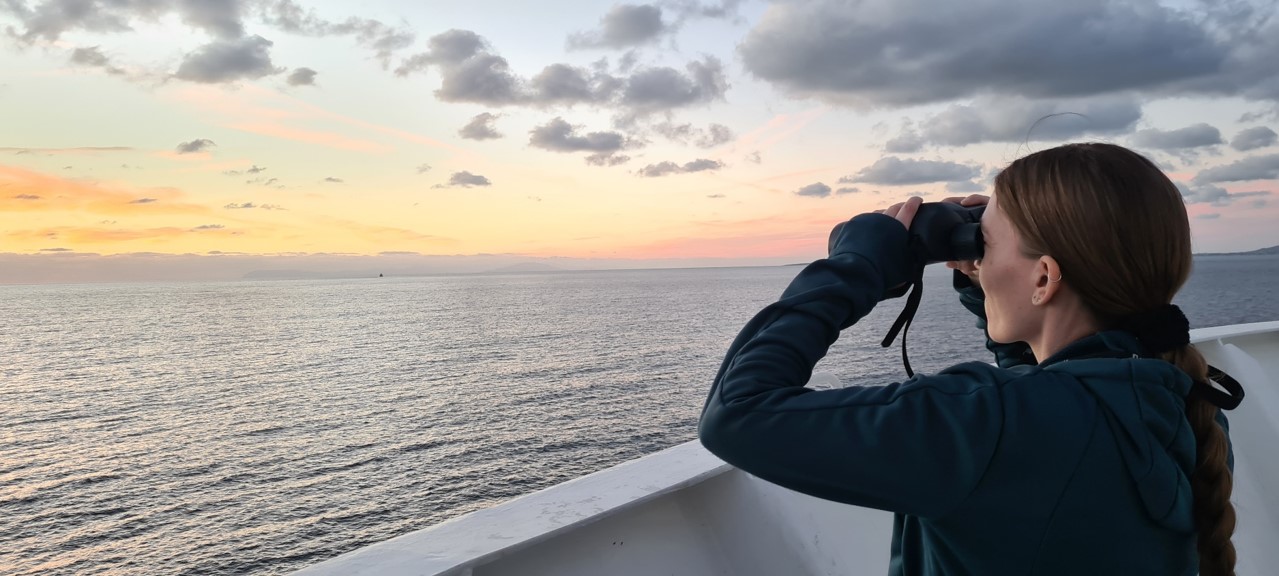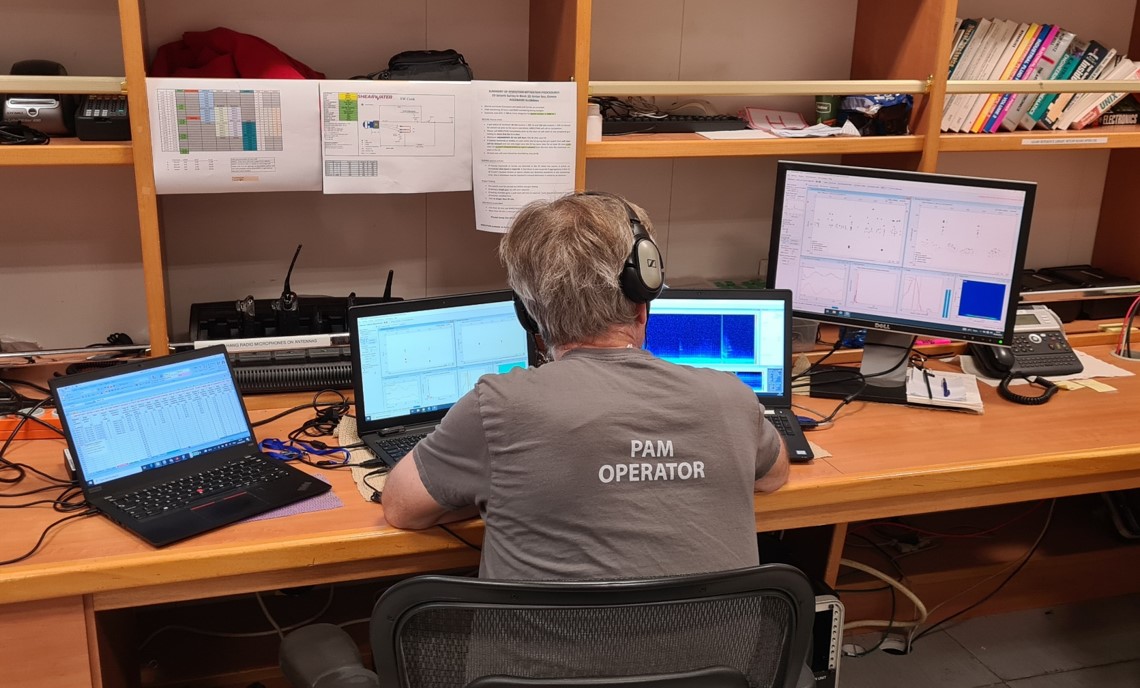Visual monitoring for marine mammals takes place by trained Marine Mammal Observers (MMOs) throughout the activities of marine geophysical surveys. The main object of MMOs is the continuous monitoring and possible appearance and behavior of marine mammals throughout the geophysical exploration activities in accordance with the international agreements, protocols and guidelines (ACCOBAMS, JNCC).
In the event of the detection of a marine mammal within the designated Exclusion Zone around the geophysical survey vessel (within a radius of 750 m) the vessel crew shall be informed immediately by the MMOs so that work can be suspended immediately.
The specialized MMOs and the experienced scientists of Passive Acoustic Monitoring (PAM) are always present throughout the research/exploration activities on the boat performing Visual Monitoring (during the day) and Passive Monitoring (during the night or periods of low visibility)
Monitoring during the night or periods of low visibility is one of the main challenges of the proposed plan. Passive Acoustic Monitoring (PAM) equipment is used and operated throughout the geophysical survey.
Passive Acoustic Monitoring enables accurate detection and indication of the position of the source of sounds reproduced by marine mammals in relation to the sliding hydrophone traction cable. In addition to these measures, Passive Acoustic Monitoring (PAM) for marine mammals is performed also throughout the day to ensure the best chance of detection.
Monitoring during the night or periods of low visibility is one of the main challenges of the proposed plan. Passive Acoustic Monitoring (PAP) equipment is used and operated throughout the geophysical survey.
The PAM enables accurate detection and indication of the position of the source of sounds reproduced by marine mammals in relation to the sliding hydrophone traction cable. In addition to these measures, Passive Acoustic Monitoring (PAM) for marine mammals is performed throughout the day to ensure the best chance of detection.
Passive Acoustic Monitoring and visual observation of Marine Mammals is recorded on a daily basis (ACCOBAMS MMO and PAM 2D MSS Report , ACCOBAMS MMO and PAM 3D MSS Report)..



